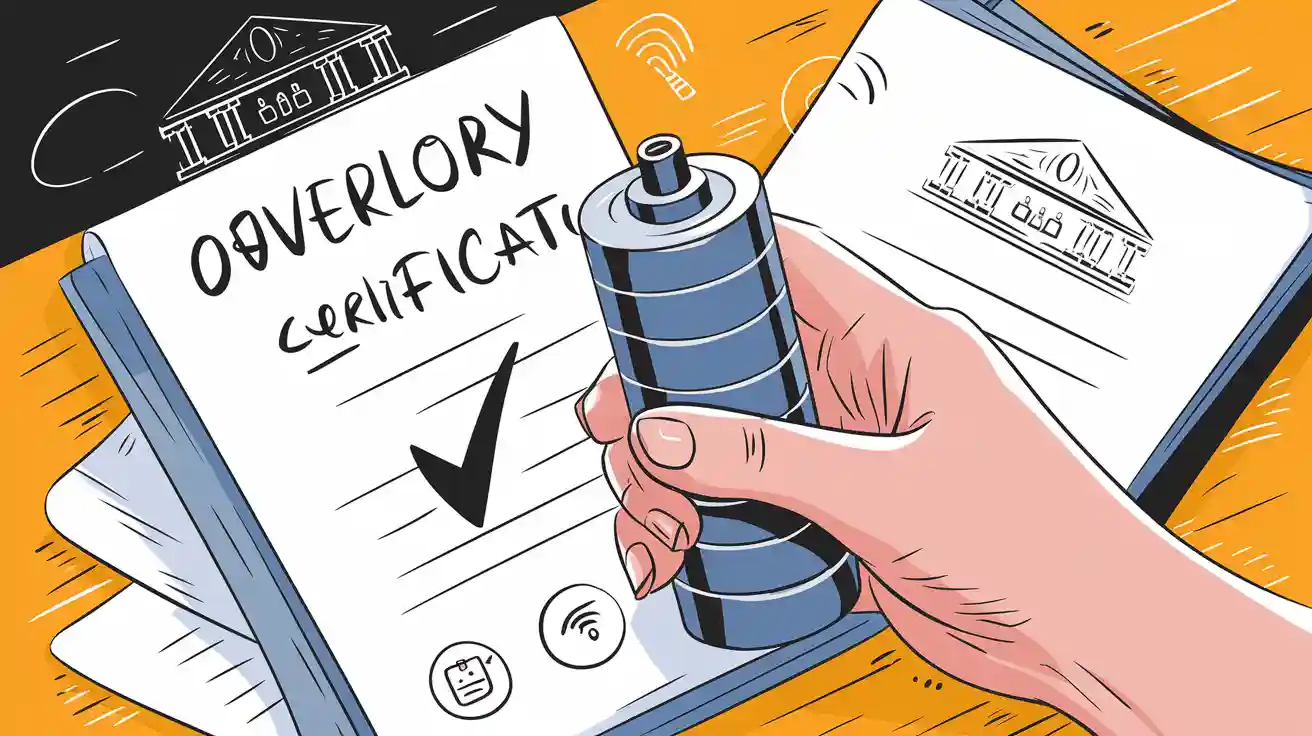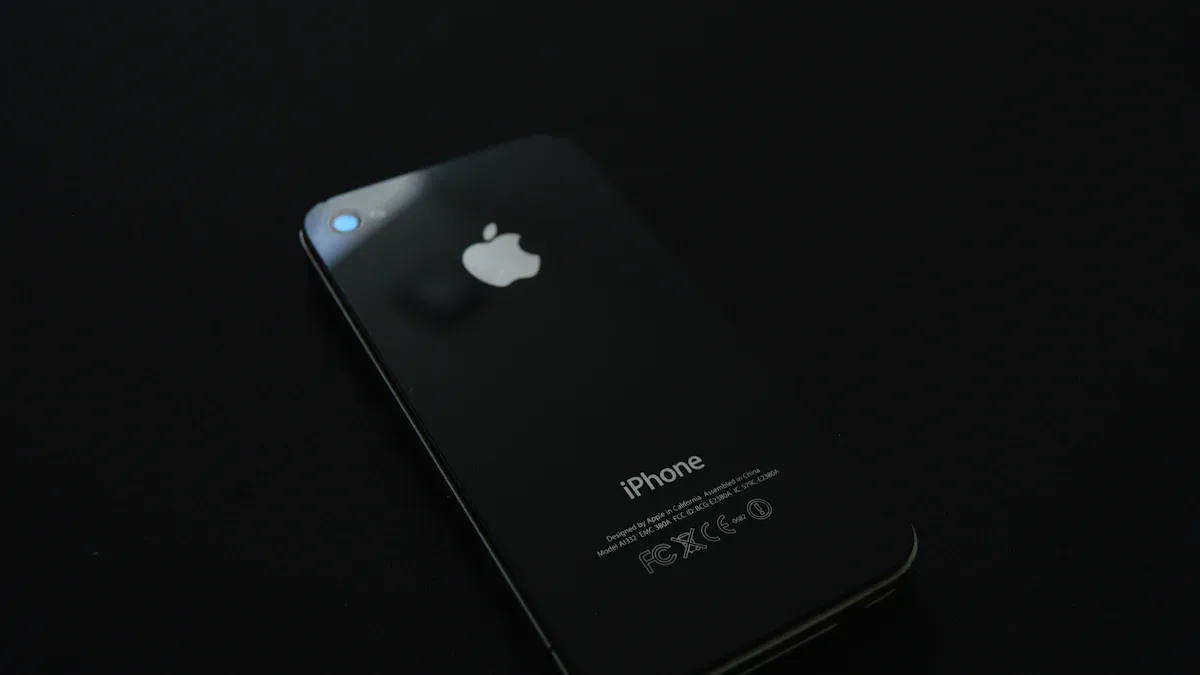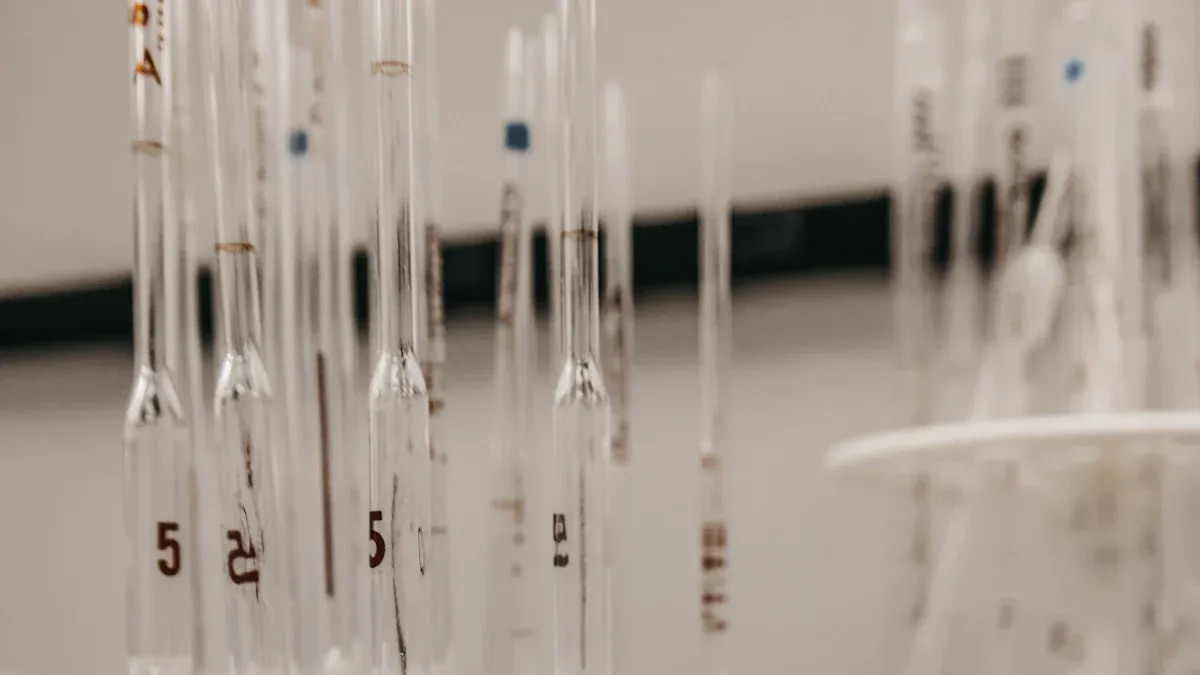
FCC certification for lithium batteries ensures that these batteries meet strict standards set by the federal communications commission. Manufacturers rely on this certification to demonstrate compliance with electromagnetic compatibility requirements, which directly impacts both safety and performance. Lithium batteries generate high-frequency impedance that can cause electromagnetic interference, making emc testing essential. In sectors like medical, robotics, and consumer electronics, emc compliance protects devices from interference and supports consumer electronics regulatory compliance. This process safeguards battery reliability while supporting safe operation in demanding environments.
Key Takeaways
FCC certification ensures lithium batteries meet strict rules to prevent electromagnetic interference and keep devices safe and reliable.
Batteries with active electronics or wireless features need FCC testing, while passive batteries without these parts are usually exempt.
Manufacturers must follow a clear process: identify rules, test in accredited labs, prepare documents, label products properly, and maintain records.
Certified lithium batteries gain easier access to the U.S. market and build trust with customers, partners, and regulators.
Following FCC rules helps protect important sectors like medical devices, robotics, and consumer electronics from harmful interference.
FCC Certification Overview

What Is FCC Certification
FCC certification for lithium batteries verifies that products meet the electromagnetic interference (EMI) and radio frequency (RF) emission limits set by the federal communications commission. These regulations, outlined in CFR Title 47, ensure that electronic devices do not disrupt wireless communications or other equipment. The federal communications commission divides products into two main categories: unintentional radiators, such as battery packs with charging circuits, and intentional radiators, like batteries with integrated wireless features. Devices that transmit below 9 kHz are exempt from these requirements. For unintentional radiators, manufacturers in the United States may issue a Supplier Declaration of Conformance. Products with wireless capabilities or those manufactured outside the U.S. require full FCC certification through accredited testing labs, resulting in an FCC ID. This process applies to a wide range of products, including smartwatches, wireless earbuds, and medical battery packs.
Electromagnetic Compatibility
EMC plays a critical role in sectors such as medical, robotics, industrial automation, and consumer electronics. Lithium battery packs with active electronics must comply with FCC Part 15B for unintentional radiators and Part 15C for intentional radiators, such as Bluetooth-enabled batteries. Industrial, scientific, and medical equipment with high-power battery systems fall under Part 18. Testing covers conducted and radiated emissions, RF output, and frequency range. Proper compliance ensures that batteries do not cause harmful electromagnetic interference, which is vital for safety and reliability in sensitive environments like hospitals, security infrastructure, and robotics applications.
Note: Bare lithium cells without active electronics are exempt from FCC testing, but most battery packs used in advanced applications require compliance with key U.S. compliance regulations.
FCC vs. Other Certifications
Certification | EMI Focus | Testing Scope | Regulatory Region | Product Classification |
|---|---|---|---|---|
FCC | Emissions only | Emissions testing only; no immunity or product safety test | United States | Class A (industrial), Class B (consumer) |
CE Mark | Emissions & Immunity | Emissions and immunity testing; includes safety & environment | European Economic Area | N/A |
RoHS | Not related to EMI | Restriction of hazardous substances; no EMI focus | European Union | N/A |
IEC | Not detailed in EMI context | Not elaborated in EMI context | International | N/A |
FCC certification for lithium batteries focuses exclusively on emissions testing to prevent electromagnetic interference, especially in the United States. CE marking in Europe requires both emissions and immunity testing, along with safety and environmental standards. RoHS addresses hazardous substances but does not cover EMI. IEC standards do not specifically address EMI in this context. Manufacturers must understand these differences to ensure proper compliance with all relevant standards and regulations.
Scope and Applicability
Active vs. Passive Batteries
FCC certification applies to lithium batteries that feature active electronic components or wireless capabilities. Manufacturers must test lithium-ion and lithium polymer batteries when these batteries operate within devices that transmit signals or include charging circuits. Devices such as smartphones, tablets, and laptops require FCC testing because they use batteries with integrated wireless features. Passive battery packs, which lack active electronics or wireless functions, remain exempt from FCC requirements. The CTIA Battery Certification program also targets products with cellular functionality, ensuring compliance with both FCC and IEEE standards. This distinction helps manufacturers understand which battery compliance regulations apply to their products.
Industry Applications
Many industries rely on FCC-certified lithium batteries to meet product compliance regulations and ensure safe operation. Key sectors include electric vehicles, energy storage systems, consumer electronics, telecommunications, medical devices, robotics, security infrastructure, industrial equipment, and portable lighting. Leading battery chemistries such as LiFePO4, NMC, LCO, LMO, LTO, solid-state, and lithium metal support these applications. Manufacturers like Panasonic, BYD, LG Chem, and Tesla supply batteries for electric vehicles, energy storage, and industrial devices. The table below compares standardized battery specifications:
Chemistry | Platform Voltage (V) | Energy Density (Wh/kg) | Cycle Life (cycles) |
|---|---|---|---|
LiFePO4 | 3.2 | 90-160 | 2000-5000 |
NMC | 3.7 | 150-220 | 1000-2000 |
LCO | 3.7 | 150-200 | 500-1000 |
LMO | 3.7 | 100-150 | 300-700 |
LTO | 2.4 | 70-80 | 7000-20000 |
Solid-state | 3.7 | 250-400 | 1000-5000 |
Lithium metal | 3.7 | 350-500 | 500-1000 |
For more on sustainability in battery manufacturing, visit Our Approach to Sustainability. To learn about responsible sourcing, see Conflict Minerals Statement.
Consumer Electronics Regulatory Compliance
Manufacturers must meet strict consumer electronics regulatory compliance requirements when selling lithium batteries in the United States. Key regulations for consumer electronics include Hazardous Materials Regulations (HMR), which cover packaging, labeling, and quantity limits for safe transportation. UL safety standards such as UL 1642, UL 2054, UL 4200A, and UL 60086-4 address battery safety, performance, and design. The Consumer Product Safety Commission (CPSC) enforces these standards and issues recalls for non-compliant products. The Consumer Product Safety Improvement Act (CPSIA) and Senate Bill 3278 (Reese’s Law) require child-resistant packaging and hazard labeling, especially for button cell batteries in children’s products. Sellers must comply with product compliance regulations, ensuring batteries are not damaged or defective and meet all regulatory requirements for marketplace access.
Certification Requirements
FCC Testing Standards
Manufacturers must understand the FCC testing standards that apply to lithium battery packs integrated into electronic devices. The federal regulations divide products into categories based on their function and emission characteristics. The table below summarizes the main FCC standards relevant to lithium batteries:
Product Category | FCC Certification Type | Applicable FCC Part(s) |
|---|---|---|
General household appliances | SDoC or FCC ID | Part 15B |
Household appliances with wireless | SDoC or FCC ID | Part 15B, Part 15C |
Industrial, medical, scientific devices | SDoC or FCC ID | Part 18 |
FCC Part 15B covers unintentional radiators, such as digital devices and receivers. Part 15C applies to low-power intentional radiators, including wireless transmitters embedded in battery packs. Part 18 governs industrial, scientific, and medical equipment with higher emission levels. These standards do not create unique requirements for lithium batteries alone; instead, they regulate the devices containing them. Manufacturers must review Title 47 CFR and FCC Knowledge Database publications to ensure compliance with all testing requirements. Devices operating below certain frequencies may qualify for exemptions, but most lithium battery packs in advanced applications require compliance testing.
Tip: Battery management systems (BMS) play a critical role in controlling emissions and ensuring regulatory compliance. For more details on BMS integration, visit BMS and PCM Solutions.
Documentation and Labeling
Proper documentation and labeling form the backbone of the FCC certification process. Manufacturers must prepare and maintain comprehensive records for each lithium battery pack model. The documentation includes:
Test reports from accredited laboratories detailing compliance with FCC standards.
Technical specifications for the battery pack, including platform voltage, energy density, and cycle life.
Schematics and block diagrams showing the integration of wireless modules or charging circuits.
User manuals and installation guides that describe safe operation and regulatory requirements.
Supplier Declaration of Conformity (SDoC) or FCC ID certificates, depending on the product category.
Records of all modifications or updates to the battery design.
Labeling requirements demand that each compliant device displays the FCC logo, FCC ID (for certified products), and any relevant hazard warnings. The label must be durable, legible, and placed in a visible location on the battery pack or device. For consumer electronics, manufacturers must also comply with hazardous materials regulations and child-resistant packaging standards. The Consumer Product Safety Commission enforces these labeling requirements to protect end users and ensure marketplace access.
Note: Incomplete documentation or improper labeling can result in severe penalties, including fines, product recalls, and removal from the market.
Compliance Steps
Manufacturers must follow a structured compliance process to achieve FCC certification for lithium battery packs. The steps below outline the typical procedure:
Submit a certification request through the CTIA Certification database.
Identify all system components, including recognized battery packs, devices, and adapters.
Select an accredited test laboratory to conduct compliance testing.
Complete all required testing and submit results to the certification database.
Prepare and submit comprehensive documentation, including test reports and technical specifications.
Pay testing and certification fees to the laboratory and CTIA.
CTIA reviews the submission and confirms that all requirements and regulations have been met.
Receive the official certification notice, authorizing the product for market entry.
Manufacturers must repeat this process for each new battery pack model or manufacturing site. The compliance process ensures that lithium battery packs meet all FCC standards and regulatory requirements. Failure to follow these steps can result in significant penalties. The FCC may impose fines, issue cease and desist orders, seize non-compliant equipment, or restrict market access. Recent enforcement actions have resulted in fines ranging from tens of thousands to millions of dollars. Non-compliance also leads to legal fees and loss of business opportunities in critical sectors such as medical, robotics, security infrastructure, and consumer electronics.
Alert: Manufacturers should regularly review FCC regulations and update documentation to maintain ongoing compliance. Proactive compliance protects business interests and supports safe operation in demanding environments.
Certification Process

Achieving FCC certification for lithium battery packs involves a structured process. Manufacturers must follow each step carefully to ensure full compliance with all regulations and standards. This process protects product reliability and supports safe operation in critical sectors such as medical, robotics, security infrastructure, consumer electronics, and industrial equipment.
Rule Determination
Manufacturers begin the process by determining which FCC rules apply to their lithium battery packs. They must review the product’s features, such as wireless modules or active electronic circuits. Products with wireless communication functions, like Bluetooth or Wi-Fi, fall under FCC Part 15C. Battery packs with only digital circuits or charging management systems typically require compliance with Part 15B. High-power battery systems for industrial, scientific, or medical use may need to meet Part 18 standards. Manufacturers should consult the latest FCC regulations and guidance documents to confirm the correct rule part. Early rule determination helps avoid costly missteps and ensures the correct compliance process from the start.
Tip: Consulting with certification bodies or experienced compliance consultants can help clarify complex regulations and reduce the risk of errors.
Testing Procedures
Once manufacturers identify the applicable rules, they proceed to compliance testing. Accredited and certified labs conduct these tests using specialized equipment. The testing process includes both pre-compliance and formal compliance testing phases. Pre-compliance testing allows manufacturers to identify and resolve potential issues before formal submission. Formal testing measures conducted and radiated emissions, RF output, and frequency range. If the battery pack integrates wireless features, the lab tests for intentional radiator emissions. For unintentional radiators, the focus remains on digital circuit emissions. Technical problems during testing, such as unexpected interference or excessive emissions, may require product redesign and retesting. This step often presents challenges for manufacturers, especially when technical issues arise.
Common challenges during the testing process include:
Navigating complex regulations, which can cause confusion and missteps.
Managing documentation, as missing or incorrect paperwork often leads to delays.
Addressing technical problems that may require redesign and additional testing.
Manufacturers should work closely with certified labs to ensure all requirements are met and to minimize delays.
Compliance Documentation
Proper documentation forms the backbone of the FCC certification process. Manufacturers must prepare detailed records for each lithium battery pack model. Required documentation includes test reports from certified labs, technical specifications, schematics, block diagrams, and user manuals. The documentation must also include a Supplier Declaration of Conformity or FCC ID certificate, depending on the product category. Manufacturers should keep records of all design changes and updates. Accurate and complete documentation supports the compliance process and provides evidence during audits or inspections. Missing or incorrect documentation often results in delays or rejection of the certification application.
Note: Maintaining organized and up-to-date documentation helps manufacturers respond quickly to regulatory inquiries and supports ongoing compliance.
Labeling
Labeling represents the final step in the FCC certification process. Each lithium battery pack or device must display the required FCC markings. The label must include the FCC logo, FCC ID (if applicable), and any relevant hazard warnings. Labels must be durable, legible, and placed in a visible location on the product. For consumer electronics, additional labeling may be required to meet hazardous materials and child safety regulations. Proper labeling ensures that products meet marketplace requirements and protects end users. Failure to comply with labeling standards can result in fines, product recalls, or removal from the market.
Alert: Manufacturers should regularly review labeling requirements to ensure ongoing compliance with changing regulations.
Compliance Benefits
Safety and Reliability
FCC certification directly improves the safety and reliability of lithium battery packs in real-world applications. Manufacturers must ensure that batteries with wireless communication functions do not cause electromagnetic interference. This requirement protects sensitive equipment in medical, robotics, security, and industrial sectors. By preventing EMI, certified lithium battery packs operate safely alongside other electronic devices. In the United States, compliance with FCC regulations addresses electromagnetic interference concerns, ensuring that batteries function reliably in environments where multiple devices work together. FCC certification also reduces the risk of malfunctions caused by interference, supporting overall product quality. While FCC focuses on electromagnetic compatibility, it complements other safety standards, such as UL, which address fire and electrical hazards. Together, these measures create a robust framework for product compliance and quality assurance.
Market Access
FCC certification serves as a gateway for lithium battery manufacturers seeking entry into the U.S. market. Compliance with federal regulations is mandatory for all electronic products, including those with lithium battery packs. Manufacturers who achieve certification can access new business opportunities in consumer electronics, medical devices, robotics, and industrial infrastructure. Service providers guide companies through rigorous testing and documentation, helping them meet all regulatory requirements. This process ensures that products meet both technical and safety standards, reducing delays and barriers to market entry. Certified products demonstrate a commitment to quality and compliance, which is essential for expanding into regulated markets. For companies focused on sustainability and ethical sourcing, integrating responsible practices further enhances their market position. Learn more about sustainability in battery manufacturing and conflict minerals.
Stakeholder Trust
FCC certification builds trust among distributors, OEMs, and end-users. OEMs and importers rely on FCC IDs and documentation to verify product compliance before entering agreements. Public records, such as test reports and user manuals, linked to FCC IDs, provide transparency and accountability. Labeling requirements ensure that lithium battery packs display compliance information, reinforcing confidence in product quality. End-users recognize FCC certification as a mark of reliability, which reduces hesitation and accelerates adoption. Certified products also minimize the risk of costly recalls and protect customer relationships. By meeting technical and safety standards, manufacturers support trust throughout the supply chain, from procurement to deployment.
Manufacturers recognize that fcc certification for lithium batteries protects critical applications in medical, robotics, and industrial sectors. Key benefits include improved safety, reliable performance, and easier access to regulated markets. Companies that follow consumer electronics regulatory compliance requirements build trust with partners and customers.
FAQ
What types of lithium battery packs require FCC certification?
Manufacturers must certify lithium battery packs with active electronics or wireless features. Passive packs without integrated circuits or transmitters remain exempt. Key sectors include medical devices, robotics, security, consumer electronics, and industrial equipment.
How long does the FCC certification process take?
The FCC certification process usually takes four to eight weeks. Accredited labs conduct testing and documentation review. Delays may occur if manufacturers need to resolve technical issues or submit additional paperwork.
What happens if a lithium battery pack fails FCC testing?
If a battery pack fails FCC testing, manufacturers must redesign the product to reduce emissions. They then retest the battery pack. Non-compliant products cannot enter the U.S. market and may face penalties or recalls.
Which lithium battery chemistries are commonly used in FCC-certified packs?
Chemistry | Platform Voltage (V) | Energy Density (Wh/kg) | Cycle Life (cycles) |
|---|---|---|---|
LiFePO4 | 3.2 | 90-160 | 2000-5000 |
NMC | 3.7 | 150-220 | 1000-2000 |
LCO | 3.7 | 150-200 | 500-1000 |
These chemistries support medical, robotics, security, consumer electronics, and industrial applications.
Where can manufacturers find official FCC guidelines for lithium battery packs?
Manufacturers can access official FCC guidelines through the FCC Knowledge Database and Title 47 CFR. These resources provide authoritative information on compliance, testing standards, and documentation requirements.




